Immunovet Fermented Wheat Germ Extract (FWGE) Research
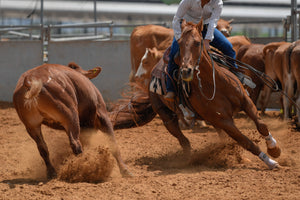
Below are summaries and links to published peer-reviewed papers and articles on Immunovet's Fermented Wheat Germ Extract (FWGE)

Fermented Wheat Germ Extract (FWGE) Effect Study On Horse Behavior
Veterinary Times (VT 48.09) 2018
A multi-year open case controlled study was conducted exploring Immunovet EQ's effects on 66 geldings and 25 mares with behavioral problems. The majority of the animals (74/91) were also recorded as suffering from a variety of ailments, such as poor appetite, difficulty retaining weight, recurrent colic and hoof problems.
The entire population of 91 animals studied benefitted from consuming Immunovet EQ as reflected by the significant improvement of the overall mean Behavioral Score from 4.4+/-0.4 to 1.5+/-0.5 (P<0.0001) on a scale of 1-5 (good to severe).

Supplementary Control of Estrus Behavior In Mares Using Fermented Wheat Germ Extract
Veterinary Times (VT 46.18) 2016
In an open longitudinal study using 46 mares covering more than 190 estrus cycles, daily supplementation with Immunovet EQ significantly reduced signs of bad behavior during estrus, improving behavioral scores to levels seen during winter periods of anoestrus.
The study showed that including FWGE in the daily feed reliably promoted reduced fractious behavior as reflected by the significant difference of the overall mean Behavioral Score from 4.24 ±0.5 in untreated mares to 1.92 ±0.37 in those fed Immunovet EQ on a scale of 1-5 (good to severe).
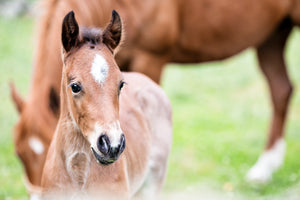
Effects of Immunovet EQ On Foals & Stallions
AgrárUnió 2007. 2.43-44
A one year controlled study was conducted using a total of 50 foals and 8 Stallions to observe the effects of Immunovet EQ on breeding and foal health.
Foals were measured by the number of necessary veterinary treatments required. Foals in the trial group fed Immunovet EQ required half as many treatments as the control.
The cell counts in semen samples for the stallions measured were 10-15% higher than the previous year when no Immunovet EQ was given to the same horses.

The Effects of Immunovet on the Condition and General Status in Companion Animals
Graduate Veterinary Thesis (2018)
The effects of Immunovet on 38 dogs and 20 cats over an 8 week period were gathered for a Veterinary Graduate Thesis. Qualitative feedback was collected from owners in the form of questionnaires asking about improvements in animal symptoms like hair loss, lack of appetite, scratching / itching, excessive sleeping, coughing, etc. after taking Immunovet.
Results showed that the majority (51/58) of animals experienced observable improvements in one or more symptoms affecting their well being at the end of the trial. The main findings were that Immunovet stimulates the appetite, improves the quality of the hair coat, promotes positive behavioral changes and improves the general condition of companion animals.
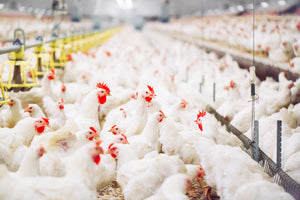
Effect of FWGE Against M. Gallisepticum Infection Of Chickens
Poultry Science, 2004. 83: 1844-1848
The effect of fermented wheat germ extract (FWGE, Immunovet-HBM) was studied in chickens challenged with Mycoplasma gallisepticum. Ninety (90) M. gallisepticum- and M. synoviae-free 3-wk-old chickens were exposed to aerosol infection of M. gallisepticum.
No mycoplasma was reisolated from brain, liver, spleen, heart, or kidneys of the FWGE-treated birds. 20% of the birds treated with FWGE showed serological response with a 5.0% reaction score, whereas in the infected untreated group, 83.3% of birds were reactors, with a 62.5% reaction score.
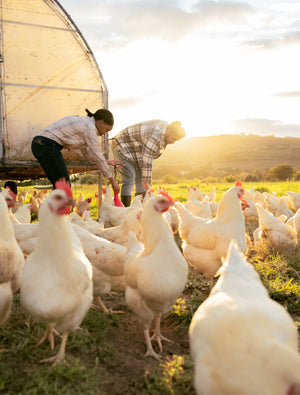
Effect of FWGE on Salmonella Typhimurium Infection of Broiler Chickens
Journal of Hungarian Veterinarians, 2020. 142. 77-85
This multi phase study investigated FWGE's effect on the performance of broiler chickens with respect to weight gain, feed conversion and their response to Salmonella Typhimurium infection.
In the first phase, the FWGE groups had greater average body weight compared to the control group. These chickens also consumed less feed and had significantly better feed conversation ratios. In the second phase, FWGE was able to reduce spreading of the pathogen: significantly fewer chickens became infected compared to the control.

Effect Of FWGE On The Immune Status of T-2 Mycotoxin Suppressed Growing Pigs
Cereal Research Communications, 2008- 36. Supplementum B 369-373
A controlled experiment was conducted using 25 six week old emasculated white pigs to evaluate the effect of Immunovet on immune status after exposure to T-2 toxins.
Across several different measures of immune status, the group fed Immunovet FWGE was observed to significantly reduce the negative effects of the mycotoxin relative the control group.
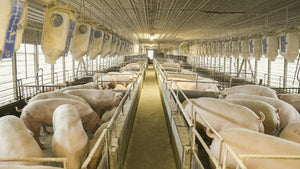
Effect of Immunovet (FWGE) On The Performance of Fattening Pigs
Hungarian Veterinary Journal, 2003. 3. 49-51.
The effect of Immunovet was studied on more than 98k, 28 day old weaned Hungarian pigs over a six month period. The trial group was fed Immunovet with their regular feed during the fattening phase to evaluate the effects of including FWGE on the animals' production parameters.
The animals fed Immunovet were observed to have >50% fewer losses compared to the control group, better production parameters (based on the SEUROP scale), higher average body weight and lower feed consumption. Hydrolase levels in the trial group were seen to be significantly higher compared to the control group.
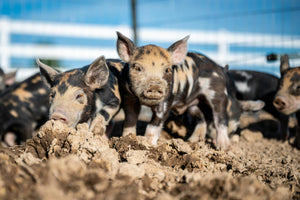
The Effect of FWGE on Production Parameters and Immune Status of Growing Pigs
Journal of Animal & Feed Sciences 20(1). 2011
A controlled experiment was conducted using 24 six week old emasculated white pigs to evaluate the effect of Immunovet on weight gain, feed conversion and immune status.
Data of the present investigation demonstrated multilateral beneficial effects of FWGE when fed to growing pigs. Important in vitro and in vivo compartments of the cellular immunity were also enhanced which might indicate improved disease resistance against facultative pathogenic microorganisms.

The Effect of FWGE on Broiler Chicks’ Growth Performance, Immunological Status, and Carcass Characteristics
Annals of Animal Science (AHEAD OF PRINT)
The study aimed to investigate the effects of adding fermented wheat germ extract (FWGE) and immunostimulant (IS) to the broiler diet and water, respectively, on growth performance, hematological and blood biochemical parameters, immune status, and carcass characteristics. A total of 180 one-day-old broiler chicks (Cobb 500) were randomly and equally assigned into four treatment groups of 5 replicates (9 chicks/replicate) each.
The inclusion of FWGE in the broiler chicken diet had a considerably positive impact on the birds’ growth performance, health, and carcass quality relative to the control group.
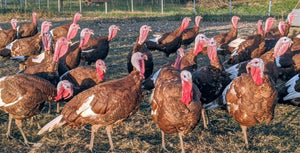
Effect of Immunovet on the Health Status and Production of Hungarian Turkey Flocks
Institute of Poultry Diseases (2007)
With Antibiotic Growth Promoters (AGPs) banned in the EU, efforts have been made to replace them with materials that do not risk food safety and have similar efficacy. An investigation of Immunovet on the effects of Turkey health and production was conducted on nearly 300k birds.
The results showed that the trial groups fed Immunovet had significantly fewer losses (>20%) and approximately 15% increases in average body weight relative to the control groups. Additionally, the trial groups had better feed conversion, meat quality / yield and lower medical costs than the control.
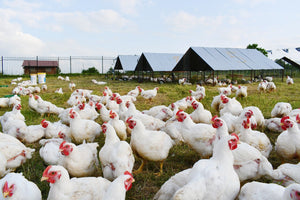
Effect of Immunovet on the Performance of Broiler Chickens
Hungarian Veterinary Journal 2004. 1. 32-33.
A controlled experiment was conducted twice using a total of nearly 1.1M head of day old Ross 308 chickens to evaluate the effect of Immunovet on mortality, body weight, and feed conversion.
The results showed that the trial groups fed Immunovet had >30% fewer losses and approximately 14% and 15% increases in body weight and feed conversion ratios respectively relative to the control groups.

The Impact of FWGE on Porcine Epithelial Cell Line Exposed to Deoxynivalenol and T-2 Mycotoxins
Oxidative Medicine and Cellular Longevity, Volume 2020, Article ID 3854247
The effect of fermented wheat germ extract (FWGE) (Immunovet®) was evaluated with cotreatments with deoxynivalenol (DON) and T-2 toxin (T-2) using an IPEC-J2 porcine, nontumorigenic cell line as it has in vivo-like properties.
FWGE appeared to be beneficial to IPEC-J2 cells given the separately and significantly decreased reactive oxygen species (free radical) levels showing FWGE could support significantly reduced mycotoxin-induced oxidative stress. The results demonstrated that FWGE promoted protective effects to counteract the oxidative stress-provoking toxins.
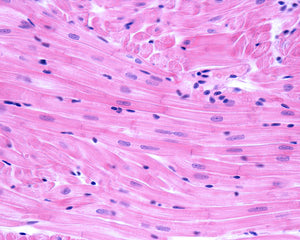
FWGE (Avemar) in the Treatment of Cardiac Remodeling and Metabolic Symptoms in Rats
Evidence-Based Complementary and Alternative Medicine Volume 2011
Research using the DOCA-salt rat model of hypertension observed that treatment with Avemar (FWGE) improved cardiac function, decreased macrophage infiltration resulting in decreased collagen deposition in the ventricular myocardium, reversed an increased stiffness of the left ventricle in the diseased hearts and attenuated oxidative stress measured as plasma malondialdehyde concentrations without changing systolic blood pressure.
It was also observed that the FWGE reversed glucose intolerance, normalized blood pressure and decreased visceral fat deposition in rats fed a high-fat/high-carbohydrate diet.

Fermented Wheat Germ Alleviates Depression-like Behavior in Rats with Chronic and Unpredictable Mild Stress
Foods 2023, 12, 920.
Restoration of the gut microbiota in rats experiencing chronic unpredictable mild stress (CUMS) can alleviate their depressive symptoms.
For this study, the CUMS model was established in rats, and these rats were treated with FWG for four weeks to evaluate the effects of FWG in relieving depression. The results demonstrated that FWG improved depression- like behaviors and increased neurotransmitter levels in the hippocampus of test subjects. In addition, FWG effectively altered the gut microbiota structure and remodeled the gut microbiota, restored neurotransmitter levels in depressed rats through the brain–gut axis, and restored amino acid metabolic functions.
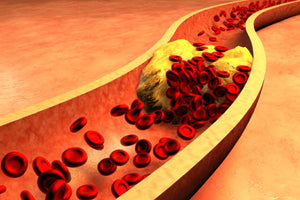
Regulatory Mechanism of Fermented Wheat Germ on Lipid Metabolism in High Cholesterol Rats via Activation of AMPK Pathway
Food Science & Technology 42 • 2022
The influences of fermented wheat germ on rats in terms of the blood glucose, insulin level, serum lipid level, cholesterol metabolism, triglyceride metabolism and enzyme activity on the basis of the high-fat rat model were studied.
The study showed that Fermented wheat germ can significantly reduce the level of serum cholesterol in high-fat model rats, and affect some cholesterol metabolism and triglyceride metabolism related enzyme activities to a certain extent by AMPK signaling pathway.
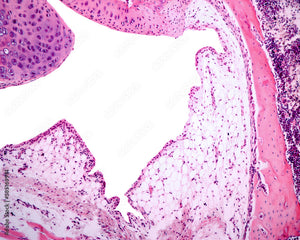
Fermented Wheat Germ Extract (Avemar) Inhibits Adjuvant Arthritis in Rats
Annals of the NY Academy of Sciences. 1110: 348–361 (2007)
Efficacy of the fermented wheat germ extract (FWGE, Avemar) in the rat adjuvant arthritis (AA) model was examined. Wistar rats with AA were given different doses of FWGE and anti-inflammatory drugs (indomethacin, dexamethasone) as monotherapies were administered and FWGE and either diclofenac or dexamethasone were also given in combination.
FWGE mono-therapy significantly inhibited the development of the secondary (immune-mediated) response in AA. FWGE inhibited COX-1 and -2, while indomethacin enhanced COX-2 gene expressions. Real-time PCR and histologies confirmed that FWGE has significant anti-inflammatory efficacy.

FWGE as a Redox Modulator: Alleviating Endotoxin-Triggered Oxidative Stress in Primary Cultured Rat Hepatocytes
Oxidative Medicine and Cellular Longevity, Volume 2020, Article ID 3181202
This study investigated Immunovet's effects on the cellular redox homeostasis applying primary hepatocyte cell cultures of rat origin. Cultures were challenged to lipopolysaccharide (LPS) treatment for 2 or 8 hours to trigger inflammatory response.
Based on the findings, FWGE did not show cytotoxic effects in any applied concentration in cell cultures. Furthermore, FWGE efficiently promoted decreased cellular reactive oxygen species (free radical) production and lipid peroxidation rate in case of LPS-induced inflammatory response.

